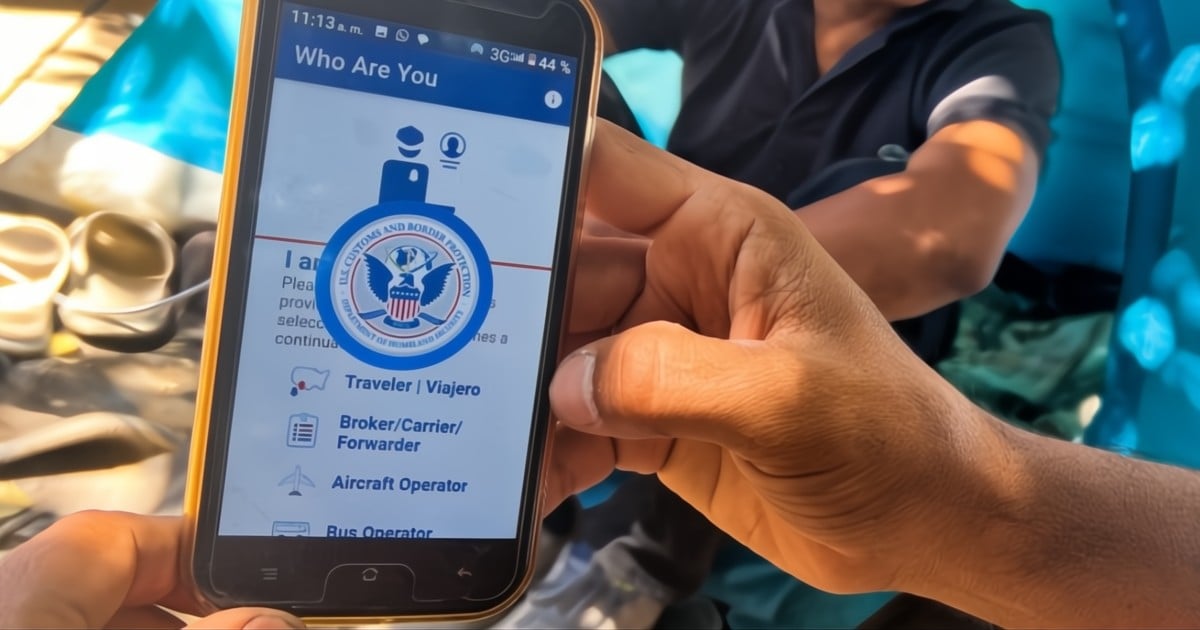
Related videos:
The U.S. government has ended the use of the CBP One application as a method of identification for migrants boarding domestic flights without official documents.
The Transportation Security Administration (TSA) announced that the new policy is effective immediately. It will only allow the use of the app in cases of self-deportation or transfer between detention centers.
The measure was confirmed by Secretary of Homeland Security, Kristi Noem, who stated that the decision reverses a "horrendous policy of the Biden era" that allowed undocumented migrants to fly without official identification.
Noem declared to Fox News Digital: "Under President Trump, the TSA and DHS will not tolerate this. Those who are in the country illegally will not be able to fly, unless it is to self-deport", she added.
The CBP One app was created under the Biden administration and allowed migrants without a valid ID to board domestic flights through a biometric verification process and background check in DHS records.
In the absence of a valid identification, an additional manual inspection was conducted at airport checkpoints.
CBP One will no longer be an accepted method in TSA security checks, which will affect migrants who have entered the country under a temporary humanitarian parole or who are awaiting their immigration processing.
Only those with a valid identification, a Real ID accepted by the TSA, will be able to board domestic flights.
Since his first day in office, the president ordered the suspension of CBP One and the humanitarian parole program. He also granted ICE the authority to cancel the status of those who had already been admitted under this permit and subsequently revoked the extension of Temporary Protected Status (TPS) for Haitians, following the cancellation of a similar extension for Venezuelans.
The Trump administration's decision to deny the use of the CPB One app for domestic flights further tightens restrictions on undocumented migrants within the United States.
Frequently Asked Questions about the Ban on the Use of the CBP One App on Domestic Flights in the U.S.
Why did the U.S. government ban the use of the CBP One app for domestic flights?
The U.S. government banned the use of the CBP One app on domestic flights as part of an effort to strengthen immigration policies and restrict the internal movement of undocumented migrants. The Donald Trump administration believes this measure reverses a policy from the Biden era that allowed migrants to travel by plane without official identification. The app will only be permitted for cases of self-deportation or transfer between detention centers.
What is humanitarian parole and how does its elimination affect migrants in the U.S.?
Humanitarian parole is a temporary permit that allows migrants to legally enter the U.S. for up to two years while they resolve their immigration status. Its elimination affects more than 800,000 people who have used this program to enter the country. With the new administration, those who have not regularized their status may face deportation. This change aims to reduce immigration and increase deportations, creating uncertainty among the program's beneficiaries.
What alternatives do migrants who used the CBP One app have for traveling within the U.S.?
Migrants wishing to travel within the U.S. must present a valid ID accepted by the TSA, such as a Real ID. The CBP One app will no longer be accepted as a form of identification for domestic flights, limiting travel options for those without official documentation. This measure is part of a stricter approach to immigration and national security by the Trump administration.
What is the impact of the cancellation of the CBP One app on asylum applications?
The cancellation of the CBP One app affects migrants who were scheduling appointments to apply for asylum at U.S. entry points. The app allowed more than 900,000 people to enter the country under the Biden administration, but under the Trump administration, this option has been removed, canceling existing appointments and creating uncertainty among those who were hoping to use this resource to regularize their immigration status.
Filed under: